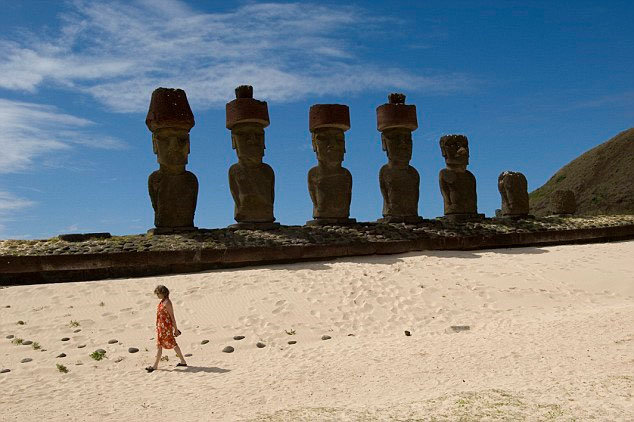Mysterious bacteria on Easter Island
Scientists have discovered a mysterious bacterium on Easter Island (Chile), able to improve the memory of the elderly, even treat Alzheimer's disease.
A group of scientists from the University of Texas (USA) has discovered a bacterium called rapamycin in the soil next to the statues of Easter Island (Chile). This bacterium acts as a natural medicine to improve the memory of the elderly and treat Alzheimer's disease.

Bacteria are found in soil near statues
on Easter Island can cure Alzheimer's
The result comes after scientists tested rapamycin developed from this bacterium in mice. Mice supplemented with rapamycin during daily meals were able to learn faster when they were small and remember better when they were older than mice that were not supplemented with the bacteria.
Dr. Veronica Galvan, head of the study, said on the Daily Mail: 'We found that mice when they had a diet included rapamycin with better learning and memorizing ability. Their brain function decline is also slower when they get older. "
Scientists also found that neurotransmitters, including serotonin, dopamine and norepinephrine, substances that have a positive effect on memory - are higher in rapamycin-supplemented mice.
Research by University of Texas scientists may open up the hope of developing a new drug that can treat dementia in the elderly, and may even be used to treat the disease. Alzheimer's is very popular in the world.
- The mysterious story of ethnicity suddenly disappeared 160 years ago
- Scientists reveal new discoveries about Easter Island
- The origin and meaning of Easter
- Revealing the mystery of the statue on Easter Island
- How did Easter Island decline?
- The most exotic islands in the world
- The Easter Island compound extends the life of the mouse
- Anti-aging medicine under the giant statue on Easter Island
- Discover concussion about the body under the statue of Easter Island
- Aliens have appeared on Easter Island?
- What do countries eat on Easter?
- The islands always belong to the past: what has been
 Why do potatoes have eyes?
Why do potatoes have eyes? 'Tragedy' the world's largest carnivorous life: Death becomes ... public toilet
'Tragedy' the world's largest carnivorous life: Death becomes ... public toilet Tomatoes were once considered 'poisonous' for 200 years
Tomatoes were once considered 'poisonous' for 200 years Detecting microscopic parasites on human face
Detecting microscopic parasites on human face